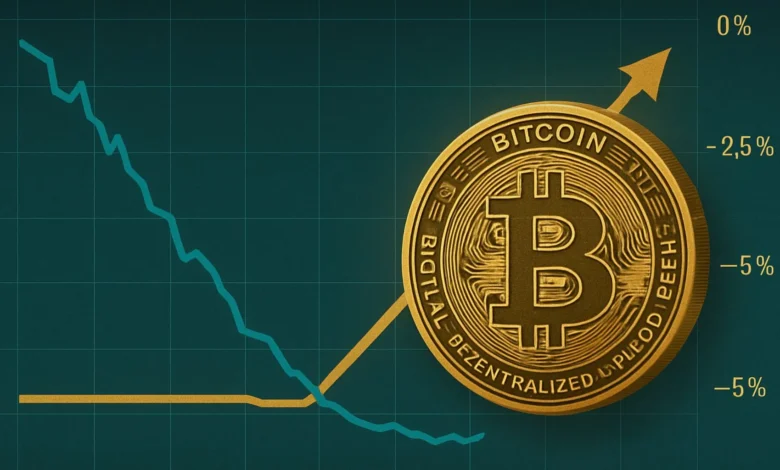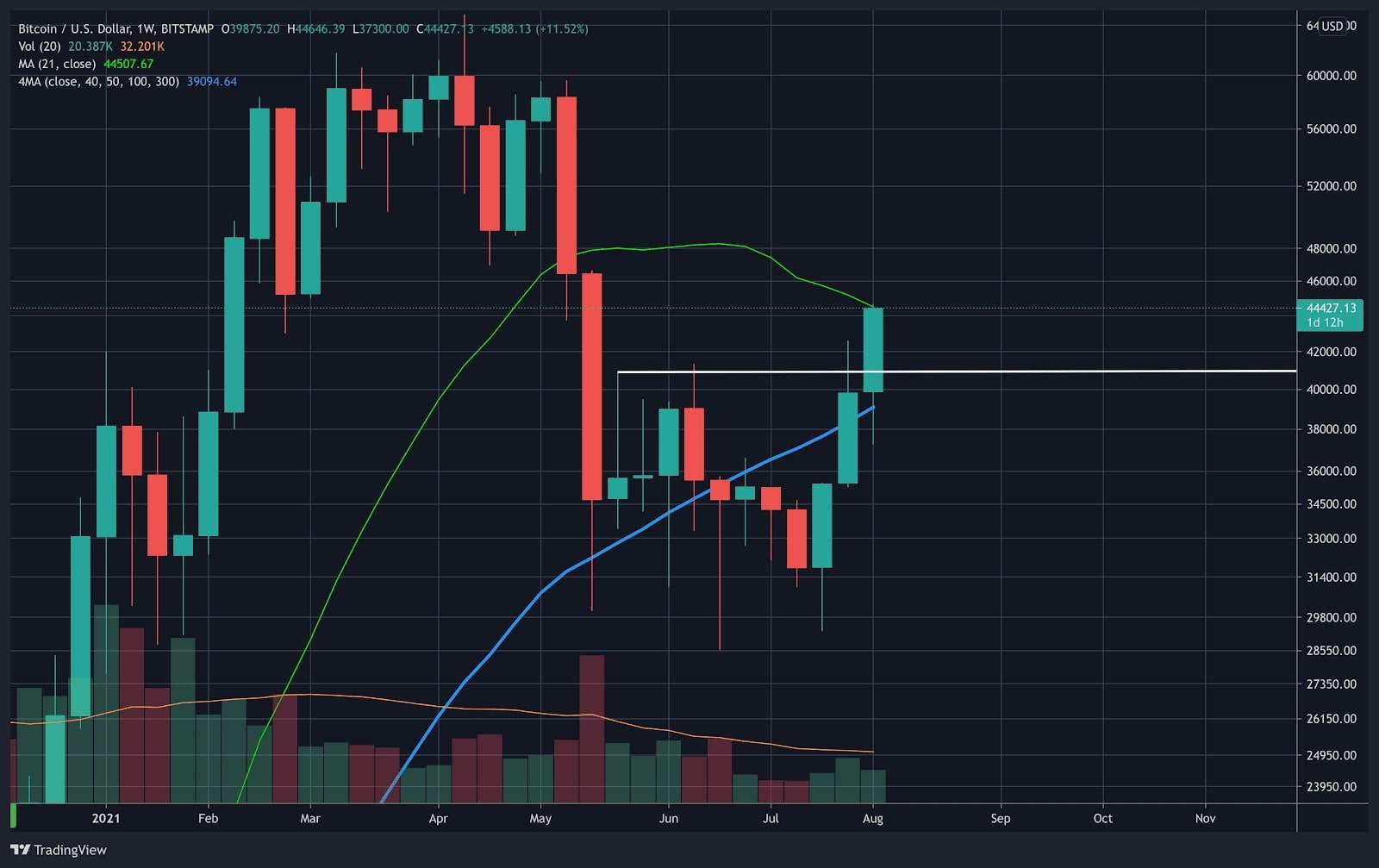Bitcoin Hits $112K Breakout as Fed Rate Cut Odds Soar
Bitcoin Hits $112K Breakout as Federal Reserve rate cut probability exceeds 98%. Crypto rally and market momentum.

$112,000 threshold. This remarkable surge coincides with an extraordinary development in traditional finance: the probability of a Federal Reserve interest rate cut has climbed above 98%, signaling a potential paradigm shift in monetary policy that could reshape the investment landscape for digital assets.
The confluence of these two events represents more than mere coincidence. Bitcoin Hits $112K Breakout: It highlights the increasingly sophisticated relationship between cryptocurrency markets and macroeconomic indicators, demonstrating how Bitcoin has evolved from a fringe digital experiment into a legitimate asset class that responds to global financial policy decisions. As institutional investors pour capital into the space and retail traders watch with anticipation, the question on everyone’s mind is whether this breakout represents the beginning of a sustained bull run or simply another chapter in Bitcoin’s notoriously volatile journey.
Understanding the mechanics behind this price movement requires examining multiple dimensions: the Federal Reserve’s monetary policy trajectory, market sentiment indicators, institutional adoption patterns, and the broader economic context that makes Bitcoin increasingly attractive as an alternative store of value. This convergence of factors has created what many market participants believe could be the perfect storm for cryptocurrency adoption at an unprecedented scale.
The Federal Reserve Rate Cut Catalyst
Bitcoin Hits $112K Breakout. The relationship between Federal Reserve policy decisions and Bitcoin’s price action has become increasingly pronounced over recent years. When the central bank signals dovish monetary policy through rate cuts, it typically weakens the dollar and pushes investors toward alternative assets that might preserve purchasing power. The current scenario, with rate-cut odds exceeding 98%, represents one of the strongest policy signals the market has seen in years.
Interest rate reductions historically inject liquidity into the financial system, making traditional savings accounts and bonds less attractive while simultaneously increasing the appeal of risk assets and inflation hedges. Bitcoin, which possesses characteristics of both categories, stands to benefit significantly from this dynamic. The cryptocurrency’s fixed supply of 21 million coins creates a natural scarcity that contrasts sharply with fiat currencies that can be printed without limit.
Market participants have been closely monitoring Federal Reserve communications, parsing every word from policymakers for hints about the timing and magnitude of potential rate adjustments. The unprecedented 98% probability reflects not just speculation but concrete analysis of economic data, including inflation trends, employment figures, and GDP growth projections. When traditional monetary tools become more accommodative, capital naturally seeks assets that aren’t subject to the same inflationary pressures that erode purchasing power.
The psychological impact of near-certain rate cuts extends beyond immediate price movements. It validates the narrative that many Bitcoin advocates have promoted for years: that cryptocurrency represents a hedge against monetary expansion and currency debasement. This validation brings credibility to the asset class and encourages both retail and institutional participation.
Technical Analysis of Bitcoin’s $112K Breakout
From a technical perspective, Bitcoin’s push toward $112,000 represents a significant milestone that has been months in the making. Chart patterns, volume indicators, and momentum oscillators all point toward sustained upward pressure that could carry prices even higher in the coming weeks. The breakout above previous resistance levels has triggered algorithmic trading systems and forced short sellers to cover positions, adding fuel to the rally.
Trading volume has surged alongside price appreciation, a crucial confirmation signal that distinguishes genuine breakouts from false rallies. When both price and volume increase together, it indicates broad market participation rather than manipulation by a small number of large traders. This organic growth pattern suggests that the current movement has stronger foundations than some previous rallies that collapsed when selling pressure emerged.
Key support levels have been established at multiple price points below the current trading range, creating a staircase effect that could cushion any potential pullbacks. Technical analysts point to the formation of higher lows and higher highs as evidence of a sustained uptrend rather than a temporary spike. The cryptocurrency market has matured considerably, with more sophisticated participants employing complex strategies that create more stable price discovery mechanisms.
Relative Strength Index readings, moving average convergence divergence indicators, and Fibonacci retracement levels all suggest that Bitcoin has room to run before entering truly overbought territory. While short-term corrections remain possible and even healthy for long-term price stability, the overall technical picture supports continued appreciation as long as broader market conditions remain favorable.
Institutional Adoption Drives Market Confidence
The landscape of Bitcoin ownership has transformed dramatically over the past several years, with institutional investors now representing a substantial portion of market participants. Major corporations, hedge funds, pension funds, and even sovereign wealth funds have allocated portions of their portfolios to cryptocurrency, lending legitimacy and stability to what was once considered purely speculative territory.
Wall Street’s embrace of Bitcoin has manifested through multiple channels. The approval and launch of spot Bitcoin exchange-traded funds created accessible investment vehicles for traditional investors who might be uncomfortable with direct cryptocurrency ownership. These financial products have accumulated billions of dollars in assets under management, creating consistent buying pressure that supports higher prices.
Corporate treasury allocations to Bitcoin have also increased, with several publicly traded companies maintaining significant positions on their balance sheets. This trend reflects growing recognition that holding purely fiat currency exposes corporations to inflation risk and currency fluctuations. By diversifying into Bitcoin, these companies seek to preserve shareholder value while potentially benefiting from price appreciation.
The participation of high-profile investors and fund managers has shifted public perception of cryptocurrency from speculative gamble to legitimate portfolio component. When respected financial professionals allocate capital to Bitcoin and publicly discuss their positions, it signals to a broader audience that the asset deserves serious consideration. This virtuous cycle of adoption and validation creates momentum that extends beyond pure technical or fundamental factors.
Macroeconomic Factors Supporting the Rally
Beyond Federal Reserve policy and technical indicators, numerous macroeconomic conditions are aligning to support Bitcoin’s upward trajectory. Global economic uncertainty, geopolitical tensions, and concerns about sovereign debt levels have prompted investors to seek assets that exist outside traditional financial systems. Digital currencies offer portability, divisibility, and resistance to government confiscation that physical assets cannot match.
Inflation concerns continue to influence investment decisions despite the recent moderation in consumer price increases. Many economists argue that official inflation metrics understate the true erosion of purchasing power experienced by average citizens, particularly in housing, healthcare, and education. Bitcoin’s programmatic supply schedule creates a deflationary characteristic that appeals to those seeking protection against currency devaluation.
The weakening of the U.S. dollar against multiple currencies and commodities has accelerated the search for alternative stores of value. Bitcoin Hits $112K Breakout: Bitcoin Hits $112K Breakout Bitcoin Hits $112K Breakout: Bitcoin Hits $112K Breakout Bitcoin Hits $112K Breakout Bitcoin Hits $112K Breakout: Bitcoin Hits $112K Breakout: Bitcoin Hits $112K Breakout: Bitcoin Hits $112K Breakout While gold has traditionally filled this role, Bitcoin offers advantages including easier transferability, lower storage costs, and greater divisibility. The cryptocurrency ecosystem has also matured significantly, with improved security protocols, regulatory clarity, and user-friendly interfaces that lower barriers to entry.
Banking sector instability and concerns about the health of regional financial institutions have reminded investors that traditional savings vehicles carry counterparty risk. Bitcoin’s decentralized nature means no single institution can freeze accounts or impose withdrawal restrictions, offering a level of financial sovereignty that resonates particularly strongly during times of uncertainty.
Retail Investor Enthusiasm Returns
While institutional adoption provides a crucial foundation and stability, retail investor enthusiasm has historically driven Bitcoin’s most dramatic price movements. Recent market data indicates that individual investors are returning to cryptocurrency markets in significant numbers, encouraged by improving prices and fear of missing out on potential gains.
Social media sentiment analysis reveals increasingly positive attitudes toward Bitcoin across multiple platforms. Online communities dedicated to cryptocurrency discussion have seen membership growth and engagement rates climb as price appreciation attracts attention. This grassroots enthusiasm creates viral marketing effects that traditional assets rarely generate, spreading awareness and encouraging new participants to enter the market.
The demographic profile of cryptocurrency investors continues to expand beyond the young, tech-savvy early adopters who dominated the space in its early years. Middle-aged professionals, retirees seeking portfolio diversification, and even traditionally conservative investors are exploring digital asset allocation as cryptocurrency moves from fringe to mainstream. Educational resources have proliferated, making it easier for newcomers to understand the technology and investment thesis without requiring technical expertise.
Mobile trading applications and simplified onboarding processes have eliminated many friction points that previously deterred casual investors. The ability to purchase fractional amounts of Bitcoin makes the asset accessible even to those with modest capital, democratizing participation in ways that many traditional investments do not permit. This accessibility factor amplifies the potential for continued retail demand growth.
Regulatory Clarity Emerges
One significant headwind that has constrained cryptocurrency growth in previous cycles has been regulatory uncertainty. Governments worldwide have struggled to develop coherent frameworks for digital assets, creating compliance challenges and legal risks that deterred institutional participation. Recent developments suggest that regulatory clarity is gradually emerging, providing a more stable foundation for market growth.
Multiple jurisdictions have implemented or proposed comprehensive cryptocurrency regulations that establish clear rules for exchanges, custody providers, and tax treatment. While some regulations impose compliance burdens, the certainty they provide outweighs the costs for most legitimate market participants. Regulatory frameworks that balance consumer protection with innovation create environments where both businesses and investors can operate confidently.
The United States has made progress on cryptocurrency legislation through congressional committees and regulatory agency guidance. Though debates continue about the appropriate classification and oversight of various digital assets, the direction of travel suggests increasing acceptance and integration into the broader financial system. This evolution from regulatory hostility to grudging acceptance to potential embrace mirrors historical patterns with previous financial innovations.
International coordination on cryptocurrency regulation has also improved, reducing opportunities for regulatory arbitrage while creating more consistent standards across borders. Major economies are recognizing that overly restrictive policies simply push innovation and economic activity to more welcoming jurisdictions, creating incentives for pragmatic approaches that protect consumers without stifling technological development.
Network Fundamentals Remain Strong
Beyond price movements and regulatory developments, Bitcoin’s underlying network fundamentals continue to demonstrate robust health. Hash rate metrics, which measure the computational power securing the blockchain, have reached all-time highs, indicating that miners remain committed to supporting the network despite fluctuating profitability.
Blockchain security strengthens as more mining equipment comes online and the geographic distribution of mining operations improves. The decentralization of mining across multiple countries and energy sources reduces vulnerability to single points of failure, whether from natural disasters, political interference, or infrastructure problems. This resilience is crucial for maintaining confidence in Bitcoin as a reliable store of value and payment network.
Transaction volumes and active wallet addresses have trended upward, suggesting genuine usage growth rather than purely speculative interest. While Bitcoin is often criticized for limited transaction throughput compared to traditional payment networks, layer-two solutions like the Lightning Network are expanding capacity while preserving the security guarantees of the base layer. These technological improvements address scalability concerns that have historically limited Bitcoin’s utility for everyday transactions.
Developer activity within the Bitcoin ecosystem remains vibrant, with ongoing protocol improvements, security enhancements, and infrastructure development. The open-source nature of the project ensures that no single entity controls Bitcoin’s evolution, creating a collaborative innovation model that has proven remarkably durable over more than fifteen years of operation.
Potential Risks and Challenges
Despite the overwhelmingly positive factors driving Bitcoin’s current rally, prudent investors must acknowledge potential risks that could derail the upward trajectory. Bitcoin Hits $112K Breakout: Market volatility remains a defining characteristic of cryptocurrency, with price swings that would be considered catastrophic in traditional equity markets occurring regularly in digital asset trading.
Regulatory crackdowns remain possible, particularly if policymakers become concerned about financial stability risks, consumer protection issues, or the use of cryptocurrency for illicit purposes. Bitcoin Hits $112K Breakout: While major jurisdictions have largely moved away from considering outright bans, Bitcoin Hits $112K Breakout: increased regulation could slow adoption or create compliance costs that reduce profitability for cryptocurrency businesses.
Technical vulnerabilities, while increasingly unlikely as the network matures, cannot be entirely ruled out. Quantum computing advances could theoretically threaten Bitcoin. Hits $112K Breakout: Bitcoin’s cryptographic security, though the timeline for such capabilities remains distant, and mitigation strategies are already under development. More immediate technical risks include exchange hacks, wallet vulnerabilities, Bitcoin Hits $112K Breakout, and user errors that result in permanent loss of funds.
Macroeconomic conditions could shift unexpectedly, with Federal Reserve policy proving less accommodative than current probability estimates suggest. Bitcoin Hits $112K Breakout: If inflation proves more persistent than anticipated, the central bank might maintain higher interest rates longer, reducing liquidity and dampening appetite for risk assets, including cryptocurrency. Economic recession could also trigger deleveraging and forced selling across all asset classes.
Conclusion
Bitcoin’s surge toward $112,000, coinciding with near-certain Federal Reserve rate cuts, represents a watershed moment for cryptocurrency markets. The convergence of accommodative monetary policy, institutional adoption, regulatory clarity, and strong network fundamentals has created conditions that support sustained price appreciation. While the asset’s notorious volatility means corrections remain possible at any time, the underlying trends suggest that digital currencies have secured a permanent place in the global financial landscape.
The relationship between traditional monetary policy and cryptocurrency valuations has matured considerably, with Bitcoin increasingly functioning as a legitimate alternative asset that responds to macroeconomic conditions in predictable ways. This evolution from speculative oddity to recognized inflation hedge and store of value represents vindication for early advocates who envisioned cryptocurrency playing a significant role in the future of finance.
Whether this breakout represents the beginning of a new all-time high or simply another chapter in Bitcoin’s cyclical price history remains to be seen. What seems increasingly clear is that cryptocurrency markets have achieved a level of sophistication, Bitcoin Hits $112K Breakout: liquidity, and institutional participation that makes them fundamentally different from previous cycles. Investors navigating Bitcoin Hits $112K Breakout: this landscape must balance enthusiasm about potential returns with a realistic assessment of risks, maintaining disciplined strategies that account for both upside potential and downside volatility.
FAQs
Q: What does a 98% probability of Fed rate cuts mean for Bitcoin?
A 98% probability of Federal Reserve rate cuts indicates that financial markets have priced in nearly certain monetary policy easing. Bitcoin Hits $112K Breakout: This typically weakens the U.S. dollar and pushes investors toward alternative assets like Bitcoin Hits $112K Breakout: Bitcoin that may preserve value better than cash during periods of monetary expansion.
Q: Can Bitcoin really reach $112,000 in the current market conditions?
Bitcoin’s potential to reach $112,000 depends on multiple factors, including sustained institutional demand, continued regulatory clarity, Bitcoin Hits $112K Breakout: and favorable macroeconomic conditions. Bitcoin Hits $112K Breakout: The cryptocurrency has demonstrated capacity for rapid price appreciation during bull markets, and current fundamentals suggest strong support for higher valuations.
Q: How do interest rates affect cryptocurrency prices?
Interest rates influence cryptocurrency prices through multiple mechanisms. Lower rates reduce returns on traditional savings and bonds. Bitcoin Hits $112K Breakout: making alternative investments more attractive. Bitcoin Hits $112K Breakout: Rate cuts also typically weaken fiat currencies and signal monetary expansion, increasing the appeal of fixed-supply assets like Bitcoin.
Q: Is now a good time to invest in Bitcoin?
Investment timing depends heavily on individual financial circumstances, Bitcoin Hits $112K Breakout: risk tolerance, and investment horizon. Bitcoin Hits $112K Breakout: While current market conditions appear favorable with strong institutional interest and accommodative monetary policy expectations, Bitcoin’s volatility means prices could move significantly in either direction.
Q: What could stop Bitcoin’s current rally?
Several factors could interrupt Bitcoin’s upward momentum including unexpected Bitcoin Hits $112K Breakout: Federal Reserve policy changes, major regulatory crackdowns, significant technical vulnerabilities, macroeconomic deterioration, or large-scale security breaches at major exchanges. Bitcoin Hits $112K Breakout: Market sentiment can shift rapidly in cryptocurrency trading, and technical corrections are normal even within sustained bull markets.


